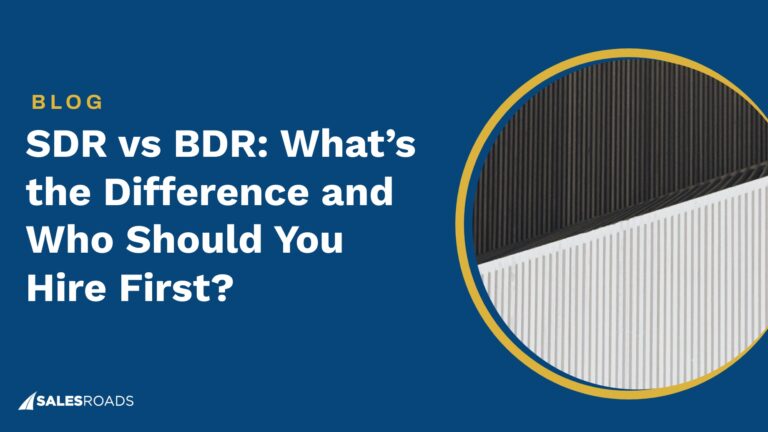Lead generation doesn’t happen by chance. You can’t just launch a campaign, cross your fingers, and expect amazing results to roll in.
Success in lead generation demands a deliberate approach—a constant cycle of action, analysis, and improvement. To refine your strategies and consistently attract high-quality leads, you need to track the right KPIs.
What Is Lead Generation KPI?
Lead generation KPIs are measurable metrics that assess the effectiveness of your lead generation efforts.
In the B2B sales environment, these metrics focus on capturing, nurturing, and converting leads into sales-qualified opportunities. Essentially, lead generation KPIs provide a roadmap for evaluating the performance of campaigns, teams, and overall strategies, offering actionable insights into what works and what doesn’t.
Unlike general performance metrics, lead gen metrics are directly tied to the buyer’s journey. Common examples include the number of leads generated, conversion rates, and cost per lead.
However, the best KPI for lead generation often varies depending on your industry, sales model, and campaign goals. Understanding what is lead generation KPI ensures you can align these metrics with your objectives and continuously optimize for better results.
Importance of Tracking Lead Generation Metrics
Tracking lead generation metrics is more than a best practice; it’s a critical component of a high-performing sales pipeline. By monitoring these indicators, you gain insights into the health and effectiveness of your lead generation efforts.
For B2B organizations, where sales cycles can be lengthy and complex, these metrics help ensure that resources are being allocated to the most impactful strategies.
Effective tracking of lead generation KPIs allows you to:
- Identify weak points in the lead funnel and take corrective action.
- Optimize campaigns based on real-time performance data.
- Demonstrate ROI to stakeholders by linking activities directly to revenue outcomes.
For example, if your cost per lead is rising but conversion rates are stagnant, this signals the need to refine targeting or adjust messaging. Similarly, tracking the lead-to-opportunity ratio helps ensure your sales team focuses on qualified prospects rather than wasting time on unfit leads.
Without tracking lead generation KPIs to track critical aspects of your campaigns, it’s impossible to make informed decisions or scale effectively.
How to Choose the Right Lead Generation KPIs
Selecting the best KPI for lead generation requires a thoughtful approach that aligns with your organization’s goals and sales objectives.
Not all KPIs hold equal weight, and using irrelevant or overly generic metrics can cloud your ability to drive meaningful improvements.
Begin by defining the purpose of your lead generation efforts. Are you focused on increasing lead volume, improving lead quality, or reducing acquisition costs? Your priorities will influence which KPIs take precedence.
For instance, if you aim to penetrate a new market, tracking metrics such as lead response time and marketing-qualified lead (MQL) conversion rates may be critical.
Next, consider the specifics of your sales process. Long sales cycles may require metrics like lead nurturing engagement rates, while shorter cycles might focus on metrics like cost per acquisition or immediate conversion rates.
Understanding the nuances of lead gen metrics ensures you’re monitoring data that accurately reflects your pipeline’s performance.
Finally, ensure that your KPIs are actionable and measurable. Each lead generation KPI you track should guide decision-making and point to clear next steps.
For example, monitoring bounce rates on your landing pages can reveal the need for content optimization, while tracking sales-qualified leads (SQLs) might indicate gaps in targeting or lead qualification.
By choosing KPIs that are directly tied to your goals and sales strategy, you create a data-driven foundation for success in B2B lead generation.
15 Lead Generation KPIs You Should Start Measuring
These metrics provide clarity on the performance of your campaigns, the quality of your leads, and the overall effectiveness of your sales funnel.
Below are 15 key lead generation KPIs you should start measuring:
Website Traffic
Website traffic is the foundation of any lead generation strategy. Monitoring the volume and sources of traffic—whether organic, paid, or referral—helps you evaluate the effectiveness of your outreach campaigns and content strategy.
High traffic is a positive indicator, but tracking deeper metrics like bounce rates and time on site reveals the quality of that traffic. This KPI is particularly vital for identifying which channels are driving visitors who are most likely to convert into leads.
Engagement
Engagement metrics provide insight into how potential leads are interacting with your content. This includes actions such as form submissions, downloads, and clicks on CTAs. Strong engagement signals that your messaging resonates with your audience.
For B2B companies, tracking engagement across multiple touchpoints—email, webinars, or gated content—can highlight which types of content are most effective in moving leads further down the funnel.
Lead Volume
Lead volume refers to the number of leads generated during a specific time frame. While this KPI measures quantity, it’s important to pair it with metrics that assess lead quality to avoid inflating numbers with unqualified prospects.
For appointment setting companies, high lead volume is critical, but it should align with your capacity to nurture and qualify those leads effectively.
Conversion Rate
Conversion rate measures the percentage of website visitors or engaged users who become leads or customers. This metric is a key indicator of the health of your lead generation efforts.
A low conversion rate often points to misaligned messaging, poorly designed landing pages, or ineffective CTAs. By optimizing these elements, you can drive more high-quality leads from the traffic you’re already attracting.
Average Deal Size
Average deal size measures the revenue generated per closed deal and helps contextualize the value of your lead generation efforts. Larger deal sizes may justify higher customer acquisition costs, while smaller deals require a lower-cost approach.
Understanding this KPI allows B2B appointment-setting companies to align their sales strategies with their revenue goals, ensuring they focus on leads that deliver the most value.
Customer Acquisition Cost (CAC)
Customer acquisition cost is a critical metric for understanding the efficiency of your lead generation efforts. It calculates the total cost of acquiring a new customer, including marketing, sales, and operational expenses.
Monitoring CAC helps ensure that your lead generation campaigns are cost-effective and delivering a strong return on investment (ROI). A high CAC with a low conversion rate can signal inefficiencies in your process that need immediate attention.
Lead Value and Quality
Not all leads are created equal, which is why measuring lead value and quality is essential. This KPI evaluates how well a lead aligns with your ideal customer profile and their likelihood of converting into a paying customer.
For B2B sales teams, high-quality leads—those with strong intent, proper qualifications, and relevant needs—are far more valuable than sheer lead volume. Tracking lead value ensures you prioritize resources on prospects that are most likely to yield significant ROI.
Lead Response Time
Lead response time measures how quickly your team follows up with a lead after their initial engagement.
In B2B sales, this is a critical KPI because response time can significantly influence conversion rates. Studies show that contacting a lead within five minutes of their inquiry increases the likelihood of conversion exponentially.
This metric highlights the efficiency of your sales processes and ensures no opportunity is left to stagnate. Fast response times demonstrate professionalism and can make a lasting first impression, ultimately setting the stage for a successful appointment-setting process.
Cost Per Lead (CPL)
Cost per lead is a foundational metric for evaluating the financial efficiency of your lead generation strategies. This KPI calculates the average expense incurred to acquire a single lead and is often segmented by channels, such as paid ads, email campaigns, or organic efforts.
By monitoring CPL, you can identify which channels yield the best ROI and which may require optimization. For appointment-setting companies, balancing lead quality with cost ensures you’re investing resources wisely while maintaining profitability.
Customer Lifetime Value (CLTV)
Customer lifetime value measures the total revenue a customer is expected to generate over the course of their relationship with your business. In lead generation, CLTV helps you understand the long-term impact of your efforts and align your strategies with high-value opportunities.
For instance, focusing on leads with a higher CLTV may justify a higher cost per lead or more intensive nurturing strategies. By integrating this KPI, sales teams can prioritize leads that deliver sustainable revenue growth.
Return On Ad Spend (ROAS)
Return on ad spend evaluates the revenue generated for every dollar spent on advertising. This KPI is particularly important for appointment-setting companies that rely on paid campaigns to generate leads.
A high ROAS indicates effective targeting and messaging, while a low ROAS may suggest that adjustments are needed in your ad strategy. By pairing ROAS with other lead gen metrics, such as lead quality and conversion rates, you can refine your approach to maximize results.
Sales Qualified Opportunities (SQOs)
Sales qualified opportunities represent leads that have been vetted and deemed ready for direct engagement with your sales team. This KPI bridges the gap between lead generation and sales execution, ensuring that time and effort are focused on leads most likely to convert.
Tracking SQOs allows you to measure the effectiveness of your lead qualification process and identify areas for improvement. For appointment-setting companies, this metric is a clear indicator of pipeline health and sales-readiness.
Marketing Qualified Leads (MQLs)
Marketing qualified leads are prospects who have demonstrated interest through specific actions, such as downloading content, signing up for a webinar, or requesting a demo. This KPI highlights the success of your marketing efforts in driving engagement and nurturing potential buyers.
While MQLs are an early-stage metric, they play a critical role in feeding the sales pipeline. Evaluating the volume and quality of MQLs ensures that your marketing campaigns align with your sales objectives.
Average Revenue Per Customer (ARPC)
Average revenue per customer measures the average income generated from each customer over a given period. This KPI is essential for understanding the profitability of your lead generation strategies.
For appointment-setting companies, ARPC can indicate whether your team is targeting leads with sufficient revenue potential. Monitoring this metric helps ensure that your efforts focus on high-value opportunities, driving revenue growth while maintaining efficiency.
Revenue and ROI
Revenue and return on investment are the ultimate benchmarks for evaluating lead generation success. These metrics tie your efforts directly to business outcomes, providing a clear picture of how lead generation contributes to overall profitability.
While revenue reflects the tangible outcomes of your efforts, ROI demonstrates the efficiency of your investments. For B2B appointment-setting companies, tracking these KPIs ensures that every campaign, resource, and strategy is aligned with your broader financial goals.
Bottom Line
Tracking the right lead generation KPIs goes beyond crunching numbers—it’s about unlocking actionable insights, optimizing your strategies, and ensuring every campaign delivers measurable impact.
By focusing on the metrics that matter most, you can drive smarter decisions, maximize ROI, and consistently generate high-quality leads that fuel long-term sales success.
FAQs
- What’s the difference between a metric and a KPI in lead generation?
Metrics are general data points that measure performance, while KPIs are specific metrics tied to strategic objectives. In lead generation, KPIs focus on measurable goals like lead quality or conversion rates that drive business outcomes.
- What is the most important KPI for lead generation?
The most important KPI depends on your goals, but conversion rate is often critical. It measures how effectively your strategies turn leads into customers, providing insight into your campaign’s overall success.
- How often should you track lead generation KPIs?
Track your lead generation KPIs regularly—weekly for short-term campaigns and monthly for longer ones. Frequent tracking helps identify trends early and adjust strategies proactively.
- Can lead generation KPIs vary across industries?
Yes, KPIs can vary depending on the industry and business model. For example, B2B companies might prioritize lead quality, while e-commerce businesses focus on cost per lead and customer acquisition cost.
- What tools are best for tracking lead generation KPIs?
CRM software like Salesforce, marketing automation tools like HubSpot, and analytics platforms like Google Analytics are excellent for tracking lead generation KPIs. These tools provide real-time data and actionable insights.
- How can you improve your lead generation KPIs over time?
Improvement comes from analyzing performance data, optimizing underperforming areas, and iterating your strategies. Testing new approaches like personalized campaigns or refining your audience targeting can yield better results.
- How do KPIs align with overall marketing goals?
Lead generation KPIs bridge the gap between tactical efforts and strategic objectives. They ensure your campaigns contribute to broader goals like revenue growth, brand awareness, and customer acquisition.










![Reverse a Sales Decline with the Root Cause Analysis [Step-by-Step Guide]](https://salesroads.com/wp-content/uploads/2025/07/Reverse-a-Sales-Decline-with-the-Root-Cause-Analysis-768x432.jpg)
